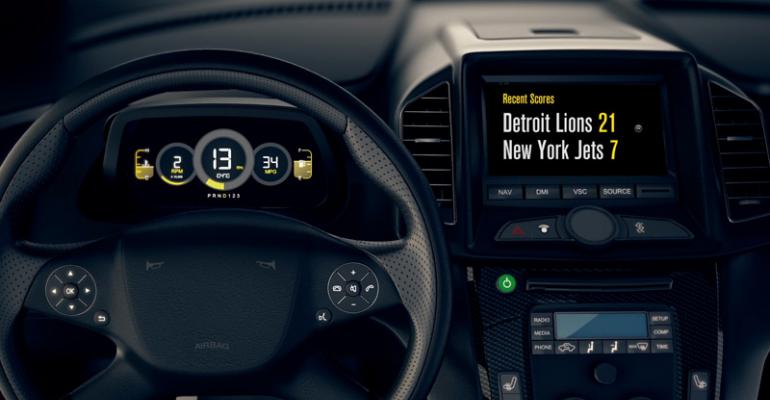LOS ANGELES – Sprint rolls out a platform it says links all connected aspects of a vehicle, from security systems to infotainment to data collected by auto makers.
Chrysler, building upon a growing relationship with the wireless carrier, will be the first OEM to carry the Sprint Velocity platform. Sprint already provides connectivity for Chrysler’s UConnect system, used in Chrysler, Dodge, Jeep, Ram and SRT vehicles worldwide.
“It’s a complete turnkey package that provides the platform behind Chrysler’s UConnect access,” Wayne Ward, Sprint vice president-emerging solutions, tells WardsAuto in an interview at the auto show here.
Auto makers, he adds, “have all the downstream applications, all the downstream partners, all the downstream vendors, but we think we needed a new space for the mobile integrator.”
With Sprint Velocity, Ward says an auto maker can track a customer’s driving habits, his preferred vehicle apps, locate a car in case of theft, collect data on repairs and other maintenance, and develop other wireless applications.
“We’ve taken all of our expertise from being a mobile carrier and applied it to that space to develop a solution so that Chrysler has one vendor to deal with in launching their entire global connected-vehicle program,” he says.
Some auto makers may have one piece of the platform, Ward says, citing General Motors and its OnStar connectivity feature as a key example. That’s fine, he notes, because Sprint can tailor components of the Velocity platform to an OEM’s requirements.
The industry is moving toward using outside vendors to supply one complete connected package, rather than develop it in-house. Earlier this year, Verizon Communications purchased Hughes Telematics, a longtime Mercedes-Benz vendor.
More such deals lie ahead as wireless carriers and auto makers aggressively court each other to keep pace with consumer tastes, Ward says.
“It’s not just about having telematics information anymore,” he says. “As customers have demanded more information for location, navigation, traffic, points of interest, remote door-lock, security, vehicle location and Wi-Fi hotspots, that’s added to the burden of those OEMs that deal with all those downstream providers.”
Auto makers “try to pull all those applications together and build (Internet protocol) IP systems when frankly, they build cars for a living. We build all these systems as a mobile carrier. We understand the mobile characteristics.”
The next generation of car buyers expects to keep their connected lifestyle going while they’re in their vehicles. On the other hand, Ward notes, parents of children want to be able to disable texting while their teenager is driving.
The convergence of consumers’ connected lifestyles and telematics has become problematic for automotive OEMs, he says. “So how do you put all those things together and provide that user experience? We think we’re in the perfect position as a carrier.”
Sprint Velocity was 2½ years in the making. One other auto maker, Hyundai, has a relationship with Sprint through its BlueLink infotainment network, albeit through Sprint’s strategic partner Aeris Communications.
“All the OEMs that we’ve talked to, and I’ve talked to dozens around the globe, they’re all in some form or fashion rolling out a connected vehicle, and we’ve got a platform that goes well beyond telematics,” Ward says.





